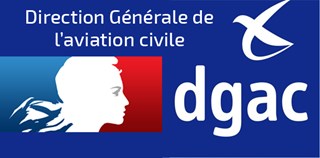DGAC - France
Association information
Air traffic control missions
The DSNA brings together more than 6,000 people in the operational, technical and administrative bodies that contribute to the realization of air navigation services. The DSNA is composed of a central management level and two main directions:
- The Operational Directorate (DO), which coordinates the activities of the five en-route air navigation centers (CRNAs) located in Aix-en-Provence, Athis-Mons, Bordeaux, Brest and Reims, and the 85 air navigation entities of France. airports, managed within the framework of 11 Air Navigation Services (ANS), regional structures located on the main airports of mainland France and overseas. The DO also includes the Central Air Navigation Systems Operations Center (CESNAC), which manages the common computer and communication systems, and the Aeronautical Information Service (AIS), which is responsible for developing and the dissemination of aeronautical information.
- The Department of Technology and Innovation (DTI) develops and ensures the proper functioning of technical means of air navigation. It also conducts studies and research on future air navigation systems. In this respect, the DTI carries out computer control assistance systems, supplies and installs communication, navigation and surveillance equipment, and provides operational entities with support for the maintenance and upkeep of equipment, as well as the maintenance of equipment. operational condition of the systems.
Royalties paid by airlines cover the costs of air traffic control. The investment credits allocated to air navigation on the civil aviation subsidiary budget, make it possible to cope with the continuation of major equipment programs.
In terms of investment, the focus has been on computer systems and more specifically the development of a new generation of flight plan processing system (eFDP) in cooperation with the Italian Civil Aviation and the launch of a program to set up 17 Mode S secondary radars that will eventually enable data exchange between the on-board and ground systems.
The priority is maintaining the level of safety and increasing the capacity of the air navigation system, while devoting a significant budget to the research and development of new tools.
Air traffic control activities
The objective of air navigation services is to get a maximum of airplanes while maintaining optimal safety conditions.
The sky under surveillance
The airport control tower is the best-known link in the air traffic control chain that keeps every aircraft under surveillance, from installation in the cabin to landing passengers.
Indeed, if the sky is large, the safety of all requires that each aircraft follows a determined and marked route, the "air corridor", respecting the horizontal and vertical separations which serve to protect the aircraft from any risk of collision or aerodynamic disturbance. Invisible, the role of the "controllers of the sky" is none the less fundamental:
- ensure the safety of all airspace users;
- communicate permanently and accurately with the crews;
- to guarantee the best possible punctuality of the flights in front of a traffic which takes again colors after the sluggishness of the years 2001 and 2002.
A shared sky negotiated between civilians and soldiers
Civilian transport planes are not alone in the sky and, above all, they can not go wherever they want.
The controllers must have a set of reserved areas, including the so-called "Charlie" zones, for training military aircraft.
This situation requires a very precise sharing of airspace and permanent coordination in real time.
This explains the presence of military controllers in air navigation centers and, conversely, their civilian counterparts in military centers.
More flexibility
The consultation between civilians and soldiers led to the creation, in February 1999, of the "National Cell of Airspace Management" (CNGE). This unit manages the activity of all the temporary segregated military zones as well as the opening of the conditional air routes.
These routes allow civilian aircraft to cross unused military training areas to shorten routes. A program will culminate in 2004 in an automated coordination between civilian and military controllers.
Press releases
-
A new advanced satellite-based procedure at Ajaccio airport to increase airport accessibility and to reduce noise and fuel burn
administrator ATC Network
-
Implementation of Free Route in France : an even more environmentally-friendly FABEC airspace
administrator ATC Network
-
DSNA and Defence pioneering integration of Medium Altitude Long Endurance (MALE) RPAS in civil air traffic
administrator ATC Network
-
DSNA pioneers in SWIM weather integration services
administrator ATC Network


.png)

.jpg)




